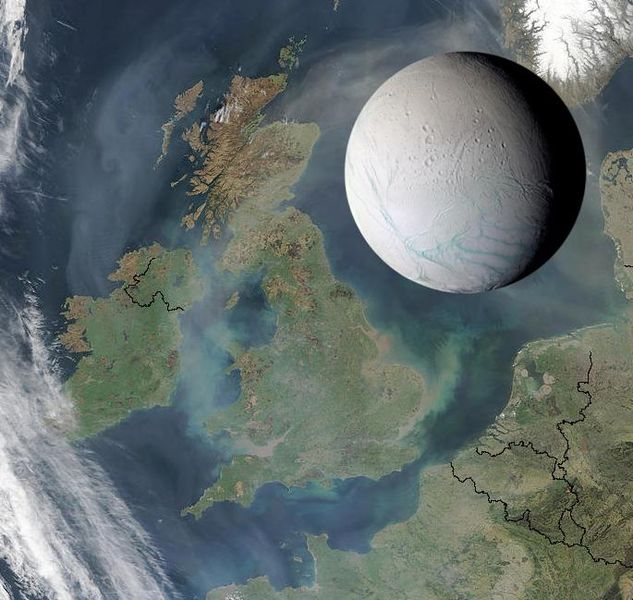Early in this series on planetary outmigration I wrote off Saturn's moon Enceladus as being both too small and too distant. However, one aspect that I had not given serious thought to is the relative thinness of the surface ice, compared to the moons of Jupiter. Where Europa's ice is some 100km thick above her salty oceans and Ganymede's is close to 200km, the ice mantle on Enceladus is somewhere between 5km and 30km, with most estimates leaning toward the lower end of that spectrum. Now, compared to an average Arctic ice cap on earth of 3 to 4 meters, this is still an awful lot of ice. But when considering the time spent in transit from earth added to the time spent boring down to liquid water, Enceladus starts to compare pretty favorably to Jupiter's icy moons. But Enceladus is still tiny, which means her gravity is very weak (0.0113 earth gravities), which means that a 200 lb person would weigh a little more than 2 lbs. However, the surface radiation on Enceladus is quite low, and it is not entirely impossible that her very low gravity could be turned to an advantage.
Regardless of the difficulty in colonizing Enceladus, one thing is for certain. Any colony on the surface of Enceladus is going to have one hell of a view of Saturn, albeit edge-on through the rings.
Here are two composite photos which give a pretty good visual of the relative size of Enceladus:


No comments:
Post a Comment